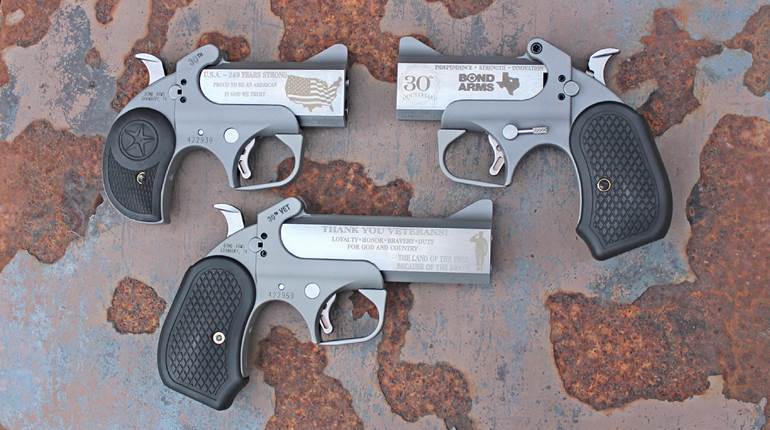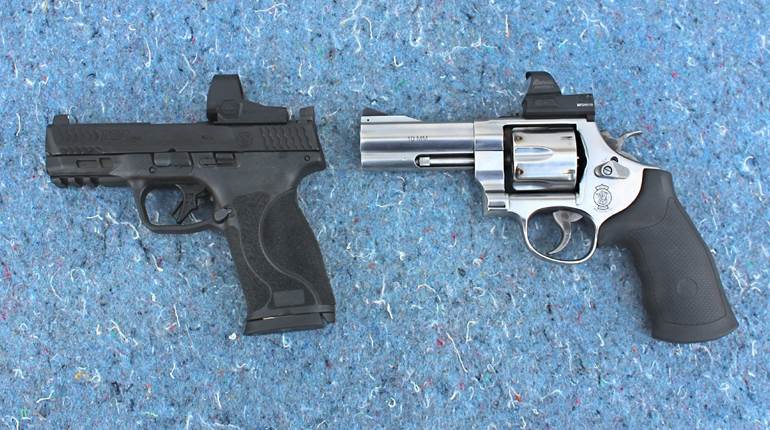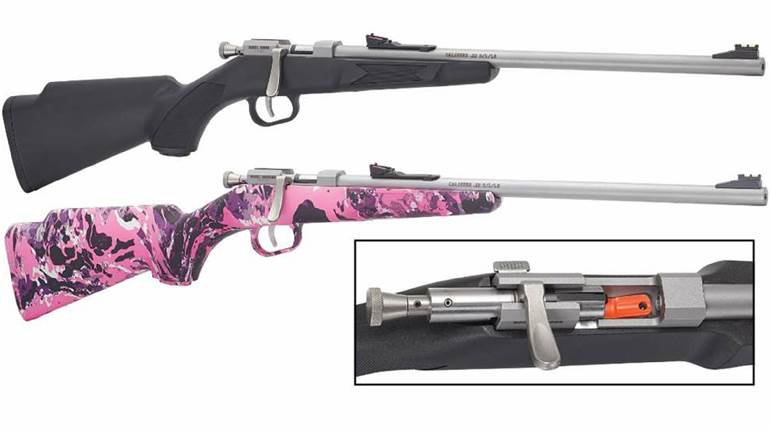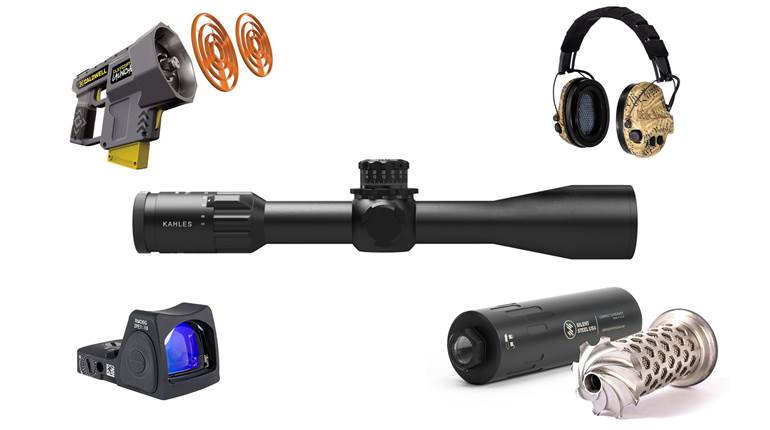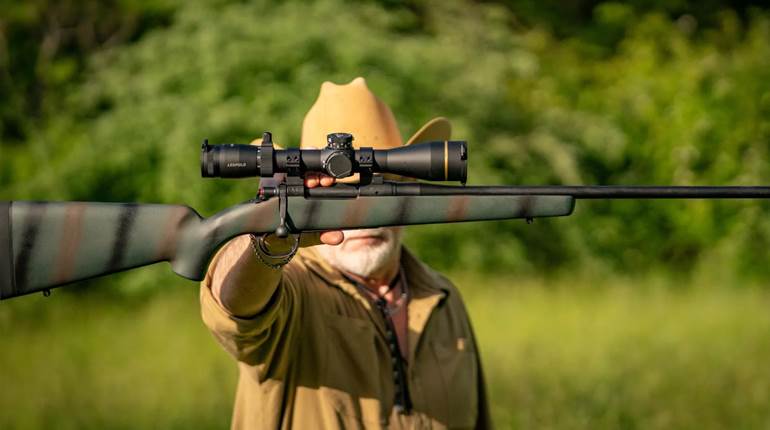
There's a longstanding trend among gun makers to offer at least a few handguns, rifles, and even some shotguns with threaded barrels, in their line-up. This threading allows various muzzle devices to be attached, which in turn interact with and alter the flow of hot gases that follow bullets out the barrel. The result of attaching a muzzle device is a perceivable change in the gun's behavior, including changes in the levels of muzzle flash, muzzle rise, felt recoil and noise levels.
Knowing which muzzle device is right for your particular needs can be a little confusing. There are dozens of devices to choose from, some of the lingo used to describe them overlaps, and there are those devices that are designed to fill multiple roles. To help sort out what is what in the twist-on accessory market, here is a high-level look at the generally accepted categories of muzzle devices and what they do:
Flash Hiders
Also known as flash suppressors, these devices should not be confused with sound suppressors (more on that later). When a gun is fired, the propellant powder inside the cartridge case is ignited by the primer. This in turn forms the high-pressure gases that push the bullet out of the cartridge case, through the rifled portion of the barrel. Most of the propellant is burned up in the process, but not all of it. Un-burnt powder leaving the barrel has a tendency to combust when it hits the oxygen-rich air surrounding the gun. This causes a brief, but bright, ball of fire to form, which is commonly referred to as muzzle flash. How bright the flash is depends on the gun and ammunition combination.
Shown here is an A2 flash hider, designed specifically for M16, M4 and AR-15 type rifles. When fitted with typical 16" barrels, these rifles produce a bright flash when firing 5.56 NATO or .223 Rem. ammunition. It's bright enough that it can give away the position of military or law enforcement personnel in a combat situation. These flashes can also be blinding to the operator in low light situations.
There's a good deal of scientific knowledge needed to explain exactly how and why flash hiders work, much of which is outside my areas of expertise. The short answer is that these devices blend, cool and/or disperse the hot propellant gases in such a way as to greatly reduce or eliminate the muzzle flash. Although flash hiders are commonly found attached to military carbines and modern sporting rifles, there are models available for handguns and hunting rifles as well
Muzzle Brakes and Compensators
Technically speaking, these two types of devices could each have their own category, but they have similar enough functions that I've grouped them together for this discussion. Both types of devices are intended to alter how a gun moves in the hands of its operator when fired. Muzzle brakes tangibly reduce the amount of felt recoil, while compensators reduce vertical muzzle rise. 
Shown above is a pair of devices developed by Alexander Arms for the company's hard-hitting .50 Beowulf platforms. As you can see, the design of the box-shaped tank-style muzzle brake (top) and the cylindrical compensator (bottom) are quite different from each other.
Simply stated, the flat, wall-like surfaces of the muzzle brake's chambers are struck and pushed forward by a portion of the escaping propellant gasses. This forward-moving shove against the muzzle device counters a portion of the rearward movement that produces felt recoil in the hands and shoulder. This recoil reduction makes rifles, especially big-bore and high-power models, more comfortable to shoot.
The compensator's vents are not intended to reduce felt recoil per se (although some models do). Instead, they vent propellant gas back and upwards of the muzzle. This pushes the muzzle forward and down to help keep it in alignment with the intended target. This makes firing follow-up shots quicker and easier with the goal being improved accuracy.
The down side to these devices, especially muzzle brakes, is they can make a rifle’s report much louder. The Alexander devices are fairly large; they have to be. But compensators are available in all shapes and sizes, like the Dead Air Armament 3-chamber brake for .308 rifles or the Kidd Innovative Designs compensator for Ruger 10/22 bull barrels.
Sound Forward Devices & Blast Deflectors
This class of device is designed to reduce the level of perceived report and muzzle blast the gun produces. However, these devices do not actually reduce noise levels. Instead, they focus the blast forward, toward the intended target and away from the shooter's ears. 
Many of the sound-forward and blast-deflector devices I've seen are intended for use with AR- and AK-pattern rifles in close-quarters-combat applications. They can also make a day at the range much less concussive. Some devices are simple, lightweight single-piece designs like the KAK Industries 9 mm Flash Can shown here. Some devices work in conjunction with a flash hider while others are more complex with adjustable settings and modular components.
Combination Devices
Over the years, clever component makers have worked diligently to provide their customers with accessories that provide more than just one muzzle taming service. Hop on the information highway and you'll find several flash hiding compensators and flash hiding brakes out  there. Shown here is the Troy Defense Claymore 556 Muzzle Brake. It's unusual because it combines a sound-forward design with a ported interior that acts as a muzzle brake.
there. Shown here is the Troy Defense Claymore 556 Muzzle Brake. It's unusual because it combines a sound-forward design with a ported interior that acts as a muzzle brake.
The key to selecting a combination device is doing your homework before you buy. Some devices, like the Troy Claymore, work as advertized while others provide mixed results.
Sound Suppressors
Sound suppressors, also known as silencers, are literally mufflers for guns. Much like an automotive muffler, suppressors contain a series of baffles that slow down and cool off propellant gases before they slam into the atmosphere surrounding the muzzle. The result is a considerable drop in noise levels when used with sub-sonic ammunition. They do not make guns completely silent or reduce the report to the Hollywood “blow gun” sound effect so popular in movies and TV shows. Suppressed guns still sound like guns. But suppressors do effectively help to protect the operator’s hearing. 
Suppressors are available for every type of commercial firearm, including shotguns. For a more detailed discussion, see Sound Suppressors 101 .













